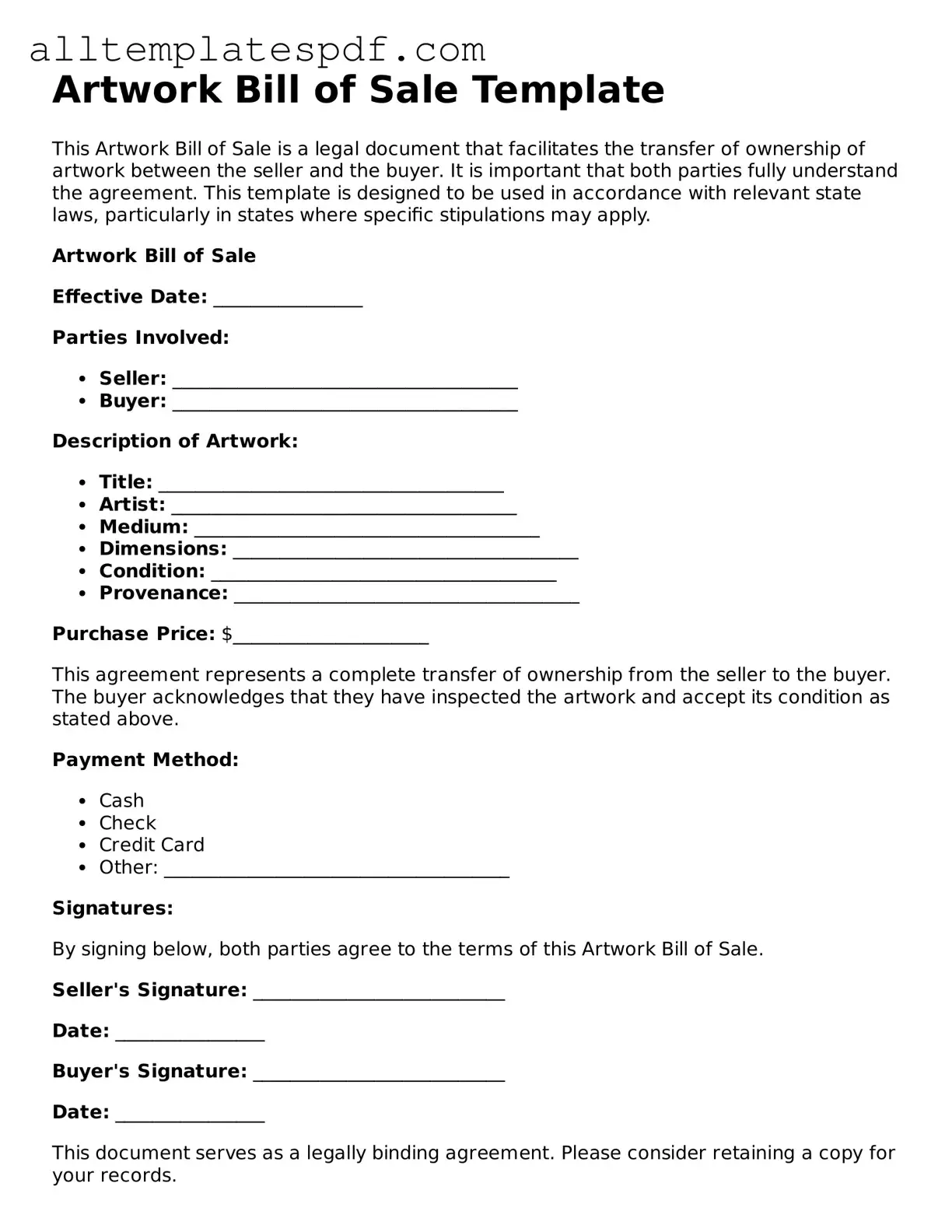When completing an Artwork Bill of Sale form, individuals often encounter pitfalls that can lead to complications later on. One common mistake is neglecting to include all relevant details about the artwork. This includes the title, medium, dimensions, and any distinguishing features. Without this information, the document may lack clarity, which can create confusion regarding the specific piece being sold.
Another frequent error is failing to accurately identify the seller and buyer. Each party's full name, address, and contact information should be clearly stated. Omitting or misspelling these details can lead to disputes over ownership or contact issues if questions arise after the sale.
People also sometimes forget to specify the sale price. While it may seem obvious, leaving this section blank can lead to misunderstandings. Both parties should agree on a price and document it to ensure that the transaction is clear and legally binding.
Additionally, some individuals overlook the importance of including the date of the transaction. This date serves as a reference point for both parties and can be critical in case of future disputes or questions regarding the sale.
Another mistake involves not providing a clear description of the payment method. Whether the transaction is completed via cash, check, or electronic transfer, specifying this detail helps establish the terms of the sale and can prevent potential conflicts.
People may also neglect to include any warranties or guarantees related to the artwork. If the seller is offering any assurances regarding the authenticity or condition of the piece, these should be explicitly stated in the bill of sale. Without this information, buyers may find themselves in a difficult position if issues arise after the sale.
Some individuals fail to sign the document. A signature is often required to validate the agreement. Without it, the bill of sale may not hold up in legal situations, undermining the transaction's legitimacy.
Moreover, individuals sometimes do not keep a copy of the completed form. Retaining a copy is essential for both the buyer and seller for their records. This document serves as proof of the transaction and can be necessary for future reference.
Finally, many people underestimate the importance of understanding local laws regarding artwork sales. Regulations can vary significantly by state or locality, and failing to comply with these can lead to legal complications. It is crucial to be aware of any specific requirements that may apply to the sale of artwork in your area.
